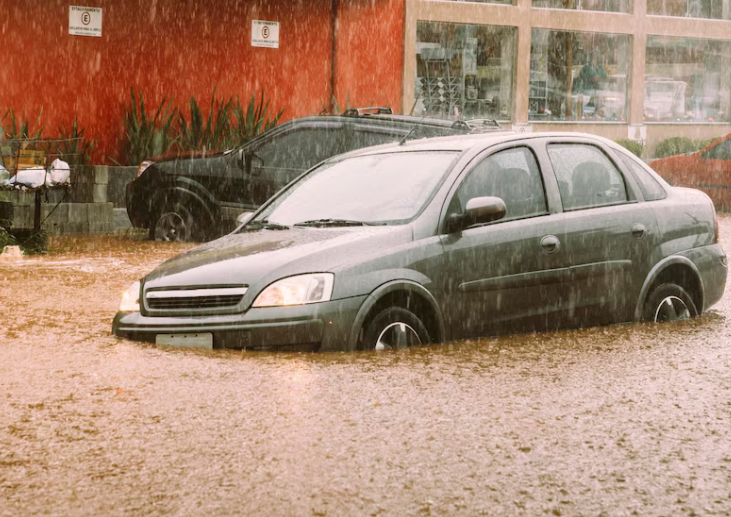Flood Damage Cars
Physical Impact Assessment
Flood damage in vehicles refers to water intrusion that exceeds normal exposure levels, typically involving partial or complete submersion. This water exposure affects multiple critical vehicle systems simultaneously. The electrical system suffers immediate damage when water contacts electronic control modules, wiring harnesses, and sensitive components. Engine damage occurs when water enters the intake system and cylinders, potentially causing hydrolock (a condition where water prevents normal piston movement). Interior components—including seats, carpeting, dashboard materials, and sound systems—absorb water and begin deteriorating within hours. These physical effects often remain partially hidden initially but progressively worsen as corrosion and mold development continue even after surface drying.
Title and Disclosure Implications
Vehicles with documented flood damage receive specific title designations affecting their legal status. Most states issue "salvage" or "flood" title brands once insurance companies declare flood-damaged vehicles total losses. These permanent title markings follow the vehicle throughout its remaining life, substantially reducing resale value and creating disclosure requirements during future sales. Some unscrupulous sellers attempt title "washing" by transferring vehicles through states with less stringent disclosure laws, making vehicle history reports essential for detecting undisclosed flood damage.
Insurance Classification Criteria
Insurance companies employ specific criteria when classifying vehicles as flood-damaged. Water reaching the bottom of the dashboard typically triggers automatic total loss designation due to the extensive electrical components located at this height. Saltwater immersion (from coastal flooding or storm surge) generally results in immediate totaling due to its highly corrosive properties. Freshwater flooding receives a slightly more nuanced assessment, with insurers evaluating the submersion duration and contamination level. These industry standards reflect the long-term reliability issues and safety concerns that flood exposure creates, even when vehicles appear superficially functional after drying.
Long-Term Reliability Concerns
Flood exposure creates progressive, long-term deterioration across multiple vehicle systems. Electrical malfunctions typically appear intermittently as corrosion gradually damages connections and components, creating unpredictable safety hazards. Mechanical systems suffer accelerated wear as flood water removes lubricants and introduces contaminants into engines, transmissions, and differentials. Airbag and safety restraint systems face compromised reliability when their sensors and control modules experience water damage. These cumulative effects typically manifest months after the flooding event, often creating repair costs exceeding the vehicle's value.
Detection Methods
Several inspection techniques help identify flood-damaged vehicles. Examining the trunk, spare tire well, and under-seat areas reveals water lines and sediment that are impossible to completely remove. Testing all electrical components identifies inconsistent operation characteristics of water exposure. Inspecting connectors and wiring harnesses beneath the dashboard reveals corrosion or cleaning attempts. Musty odors persist despite detailing efforts, particularly when heating or air conditioning systems operate. Professional pre-purchase inspections using moisture meters and diagnostic equipment provide the most reliable flood damage detection.






